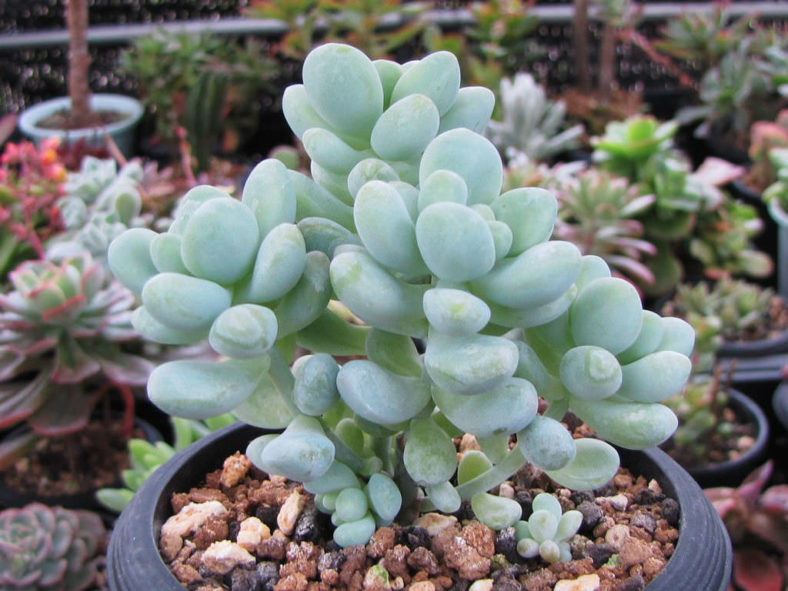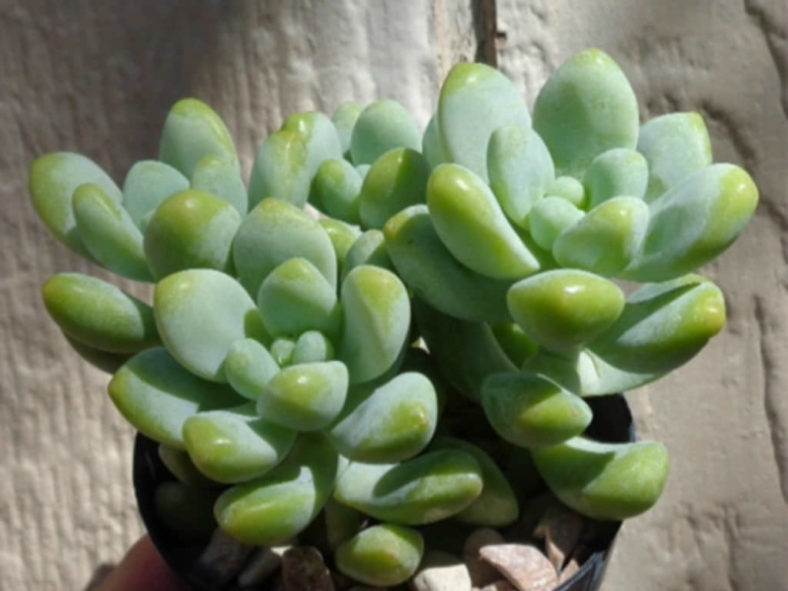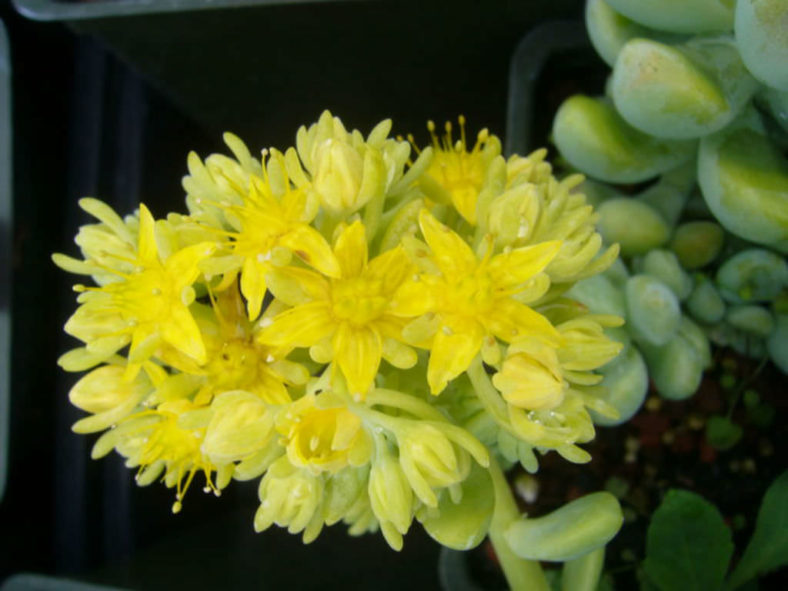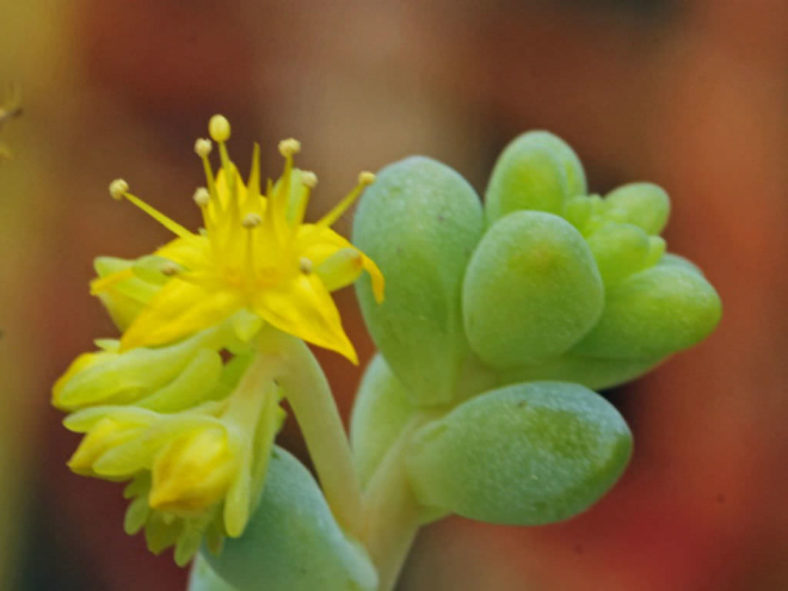Scientific Name
Sedum treleasei Rose
Scientific Classification
Family: Crassulaceae
Subfamily: Sempervivoideae
Tribe: Sedeae
Genus: Sedum
Etymology
The specific epithet "treleasei" (pronounced "tre-LEE-see-eye") honors the original collector William Trelease (1857 -1945), an American botanist, entomologist, explorer, writer, and educator.
Origin
This species is native to Mexico, specifically Puebla.
Description
Sedum treleasei is a succulent subshrub with erect, procumbent, or pendulous stems and thick, fleshy, pale blue-green leaves. The stems can reach up to 8 inches (20 cm) in height. The leaves are oblong to nearly ovate, thick but flat to slightly cylindrical, and can measure up to 1.4 inches (3.5 cm) in length. Older leaves often develop a yellow tinge at the tips and margins, and sometimes, a flush of pink appears at the tips.
The flowers are bright yellow, star-shaped, 5-merous, and appear from late winter to early spring in compact clusters on stalks growing up to 6 inches (15 cm) long. They can reach a diameter of 0.5 inches (1.3 cm).

Hybrids of Sedum treleasei
How to Grow and Care for Sedum treleasei
Hardiness: USDA hardiness zones 9a to 11b: from 20°F (-6.7°C) to 50°F (10°C).
When growing Sedums, note that these plants require minimal attention or care. They will thrive in conditions that many other plants do, but will also do just as well in less hospitable areas. They are well-suited for areas of the yard that receive excessive sun or insufficient water, making it difficult for other plants to grow. A common name for Sedum is Stonecrop because many gardeners joke that only stones need less care and live longer.
Sedum is easy to propagate. For shorter varieties, simply laying the plant on the ground where you want it to grow is usually enough to get the plant started there. They will send out roots from wherever the stem touches the ground and the root itself. If you want to ensure the plant starts there, you can add a very thin layer of soil.
You can break off a stem from taller varieties and push it into the ground where you want to grow it. The stem will root readily, and a new plant will be established within a season or two.
Learn more at How to Grow and Care for Sedum.
Links
- Back to genus Sedum
- Succupedia: Browse succulents by Scientific Name, Common Name, Genus, Family, USDA Hardiness Zone, Origin, or cacti by Genus
Photo Gallery
Click on a photo to see a larger version.


